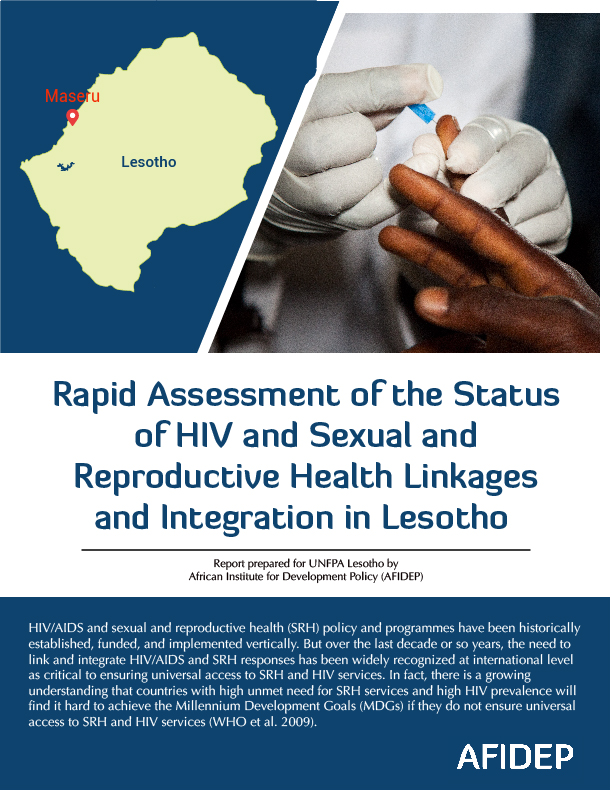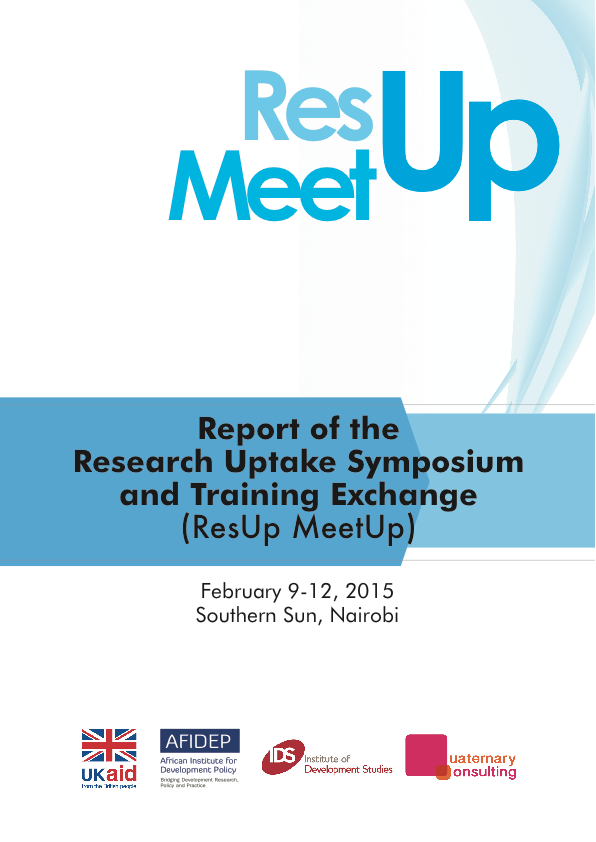Research Reports

This report summarises the results of a study carried out to assess the potential Demographic Dividend (DD) that Rwanda can earn under different policy scenarios, and also to determine the policy actions that the country can invest in to optimise its chances of harnessing the DD. The Demographic Dividend (DD) refers to the temporary economic benefit that a country can earn from a significant increase in the ratio of working-age adults relative to young dependents that is created by rapid decline in birth rates.

This study examines three cases in which governments in Sub-Saharan Africa have undertaken reforms of formal secondary as well as TVET systems to better incorporate training in transferable skills. While, until recently, this type of skills training was largely implemented on a small scale by private and non-profit organizations working largely with out-of-school youth, these cases offer early examples of how the governments of Rwanda, Kenya, and Nigeria have brought this training into the formal education system and scaled it up, sometimes dramatically.

In 2011, the government of Malawi adopted a National Health Research Agenda (NHRA) for 2012-2016 to guide investments in health research in order to enable the generation of research that is responsive to the health needs and priorities of the country, with the ultimate aim of improving the health status of its people. The Agenda was expected to contribute to the overall goal of the second Malawi Growth and Development Strategy (MDGS II) and the achievement of the Millennium Development Goals.

HIV/AIDS and sexual and reproductive health (SRH) policy and programmes have been historically established, funded, and implemented vertically. But over the last decade or so years, the need to link and integrate HIV/AIDS and SRH responses has been widely recognized at international level as critical to ensuring universal access to SRH and HIV services. In fact, there is growing understanding that countries with high unmet need for SRH services and high HIV prevalence will find it hard to achieve the Millennium Development Goals (MDGs) if they do not ensure universal access to SRH and HIV services (WHO et al. 2009).

This report draws from a retrospective policy analysis study of the role of evidence in the formulation of health policies in Malawi. The purpose of the study was to provide an understanding of the status of evidence use in past health policy formulation processes in the country. This study was part of the Strengthening Capacity to Use Research Evidence in Health Policy (SECURE Health) programme and its purpose was to provide baseline information on the status of evidence use that would contribute to the assessment of the impact of the SECURE Health programme

The population of Malawi is youthful, with almost half (47 per cent) aged 18 and below. This youthful population is Malawi’s greatest resource. If properly nurtured and supported, the youth will positively contribute to Malawi’s socio-economic development.
The Government of Malawi through the Ministry of Finance, Economic Planning and Development in collaboration with the United Nations Country Team (UNCT) under the leadership of the United Nations Population Fund (UNFPA) commissioned the National Demographic Dividend Study in 2015.

This project report derives from a baseline policy analysis study to assess the status of research use in the formulation of policies by the Ministry of Health in Kenya (MoH). The study was conducted as part of the SECURE Health (Strengthening Capacity to Use Research Evidence in Health Policy) programme in Kenya, whose overall objective is to optimise access and use of research evidence in health sector decision-making, planning and programming.

The ResUp MeetUp (Research Uptake)community is designed to help research uptake and communication professionals keep up-to-date with this rapidly evolving field. The African Institute for Development Policy (AFIDEP), the Institute of Development Studies (UK) and Quaternary Consulting convened the first ResUp MeetUp Symposium and Training Exchange in Nairobi, Kenya, from February 9–12, 2015. The overarching goal of the forum was to explore issues surrounding the utilisation of research evidence in decision-making by policymakers, programme implementers and communities, among others (i.e. research uptake).

Zambia’s Demographic Dividend study assessed the economic and human development potential of our country in the short, medium and long-term using a comprehensive approach. It generated relevant policy and programme information to guide a well-blended policy-mix required to propel Zambia towards achieving its Vision 2030 aspiration of becoming a prosperous middle-income country.

About half a century after it was established and many of its member states gained independence, the African Union’s Agenda 2063 set the stage for the continent to transform into an “integrated, prosperous and peaceful Africa, driven by its own citizens and representing a dynamic force in the global arena” in the next 50 years. Agenda 2063 was formulated at a time when the continent is enjoying an economic renaissance characterised by steady economic growth over the past decade or so.

Research uptake in public policymaking processes remains sub-optimal, particularly in sub-Saharan Africa, despite the recognised importance of using research evidence in policymaking. Knowledge on how to improve research uptake to enable evidence-informed policy-making in developing countries remains inadequate.In fact, most of the knowledge in this area is drawn from research in developed countries.

This study was undertaken to understand the current level of capacity of the Malawi Ministry of Health (MoH) and Parliament to use research evidence in decision-making and the factors that influence capacity to use research evidence in decision-making.

